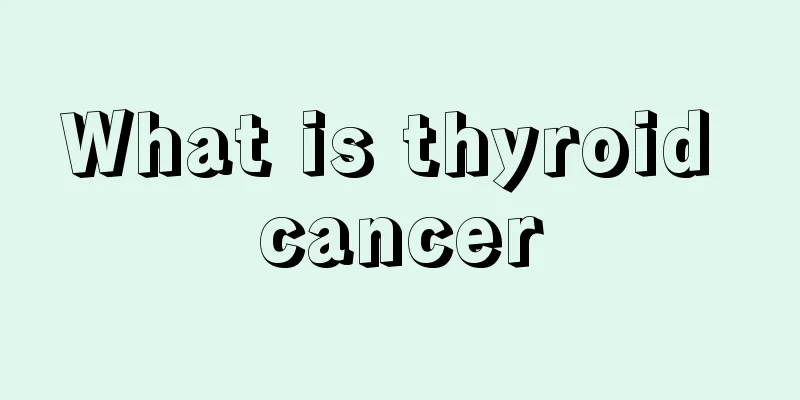Which radical treatment method for liver cancer is better? These methods have the effect of curing liver cancer

|
Liver cancer refers to malignant tumors that occur in the liver, including primary liver cancer and metastatic liver cancer. When people talk about liver cancer in daily life, they are mostly referring to primary liver cancer. Primary liver cancer is one of the most common malignant tumors in clinical practice. According to the latest statistics, there are about 600,000 new liver cancer patients in the world each year, ranking fifth among malignant tumors. Primary liver cancer can be divided into hepatocellular carcinoma, cholangiocarcinoma and mixed liver cancer according to cell typing. According to the morphology of the tumor, it can be divided into nodular type, massive type and diffuse type. Primary liver cancer is a high-incidence disease in my country, and generally more men than women. China is a major country of hepatitis B. Most of the liver cancer in my country develops on the basis of hepatitis B cirrhosis. The number of hepatitis C patients is also gradually increasing, and hepatitis B will also develop into liver cancer. At present, the number of patients in my country accounts for more than half of the world's cases, accounting for 55% of the world's liver cancer patients. It has become a major killer that seriously threatens the health and life of the Chinese people, and its danger should not be underestimated. The current radical cure methods include liver transplantation, radical resection, and fractionated ablation therapy. Indications for surgical treatment: radical treatment of early, intermediate and localized tumors, palliative treatment of advanced tumors. Advantages: Surgery is a mechanical method that can temporarily remove large tumors. There are no problems such as chemotherapy resistance and radiation resistance. Disadvantages: It is highly traumatic, and surgery is difficult in some areas. It is ineffective for subclinical metastases, and has certain limitations in treatment. It cannot completely eliminate cancer cells, and cancer cells will grow again within a certain period of time. Indications for liver transplantation: Radical treatment of early, mid-stage and localized tumors (maximum tumor size 3 cm, total no more than 3, single tumor diameter <5 cm), otherwise prone to recurrence, cirrhosis of the liver with liver function grade B and C (jaundice: total bilirubin: greater than 50umol/L) and treatment of liver cancer. Advantages: It can solve problems such as tumors, liver cirrhosis, ascites, jaundice, etc. at the same time. Disadvantages: Highly traumatic, difficult surgery, ineffective for subclinical metastases, cancer cells will grow again within a certain period of time, and the possibility of tumor metastasis and recurrence is greater due to postoperative immunosuppressant administration. Therefore, small liver cancer with liver function grade A may not require a liver transplant. In addition, if the tumor is too large or involves blood vessels or metastases, a liver transplant is not required. Physical ablation therapy Indications: Radical treatment of early, intermediate and localized solid tumors, minimally invasive radical treatment of a few advanced tumors or cytoreductive treatment of meniscus tumors. Advantages: CT or B-ultrasound guidance, accurate positioning, local anesthesia. Thermal ablation or cryoablation is used to cause coagulative necrosis of the tumor to achieve the resection effect. It is also effective for metastatic tumors and is safer than surgery for tumors near intrahepatic blood vessels. Multiple tumors in different liver lobes can be ablated at one time, with little trauma. The patient can move 6 hours after surgery, and liver function recovers quickly. It is an important means of treating cancer. The smaller the tumor, the better the effect. Disadvantages: 1. After large tumor necrosis, poor absorption of necrotic tissue may cause infection and require external drainage treatment. 2. The treatment cycle for large tumors is long, generally requiring 2 to 3 months. If it is not combined with embolization, the temperature rises slowly during the procedure and the effect is affected. |
<<: What are the early symptoms of lung cancer? 3 early symptoms of lung cancer you should know
Recommend
How to make sparkling water
Sparkling water is a drink that is deeply loved b...
Nasopharyngeal cancer patients should pay attention to the choice of toothbrush when taking care of their oral cavity
Nasopharyngeal cancer patients should pay attenti...
Pathological staging of bladder cancer
Bladder cancer is one of the more serious cancers...
What to do if the seams of toes are rotten
Our feet are wrapped in shoes every day. Many peo...
What should you pay attention to when doing radiotherapy for lung cancer? Several points to note when doing radiotherapy for lung cancer
The complications of radiotherapy for lung cancer...
Can fish maw enlarge breasts? You will know after reading the following
Fish maw is fish maw, a dried product of various ...
What can I eat so that mosquitoes won’t bite me?
Mosquitoes are very powerful insects in our lives...
What to do if your eyes are dry and bloodshot, how to prevent it
Many students and office workers will certainly h...
How to whiten teeth most effectively
Teeth are very important to everyone because they...
What eyebrow shape is suitable for an oval face
When talking about a person's appearance, one...
How to cut mango into pieces
In daily life, many people like to eat mangoes ve...
How does Western medicine treat kidney deficiency?
In fact, kidney deficiency is a relatively common...
How to identify semen stains on women’s underwear?
Semen stains appear on underwear. This problem ma...
Medication for the recovery period of cerebral infarction_Medication for the recovery period of cerebral infarction
Cerebral infarction is a serious illness. After a...
What is the difference between silky eyebrows and powder eyebrows?
Powder eyebrows are also known as subtle intracel...









